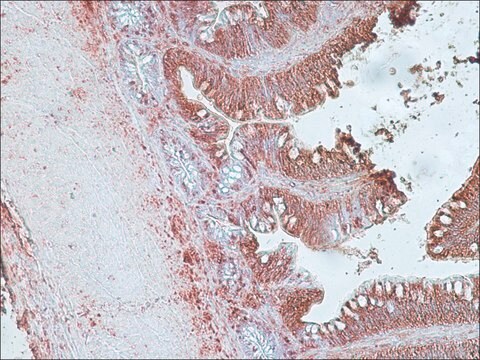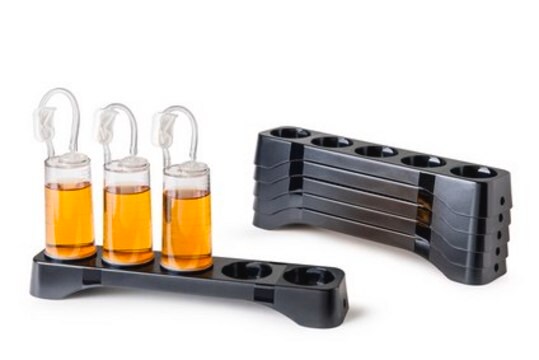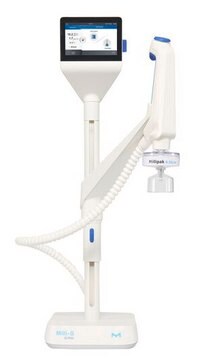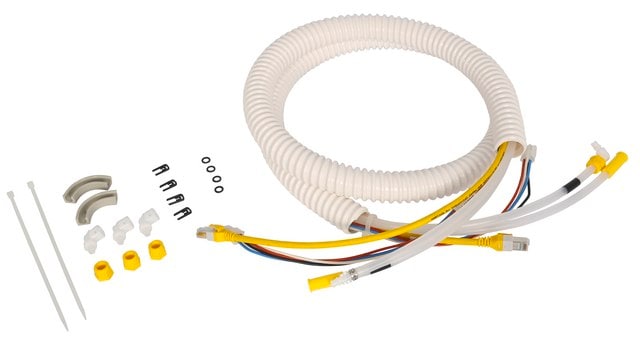05-23-0050
Corticotropin Releasing Factor, Human and Rat
An immunomodulatory neuropeptide that acts to release ACTH from the anterior pituitary and stimulates the sympathetic nervous system and adrenal medulla.
别名:
Corticotropin Releasing Factor, Human and Rat, CRF, CRH, Corticotropin-releasing hormone
登录查看公司和协议定价
所有图片(2)
About This Item
推荐产品
一般說明
Research area: Neuroscience
Corticotropin-releasing factor (CRF), a 41-amino-acid peptide, is widely expressed in neurons throughout the mammalian brain and several peripheral tissues such as the pancreas, stomach, and small intestine. It functions by stimulating the secretion of corticotropin in the anterior pituitary, which in turn regulates adrenal cortex synthetic/secretory activity. Human CRF is located on chromosome 8q13 and is identical to rat and mouse CRF. It assumes a random coil structure under physiological conditions and α-helix shape in an amphiphilic environment.
Corticotropin-releasing factor (CRF), a 41-amino-acid peptide, is widely expressed in neurons throughout the mammalian brain and several peripheral tissues such as the pancreas, stomach, and small intestine. It functions by stimulating the secretion of corticotropin in the anterior pituitary, which in turn regulates adrenal cortex synthetic/secretory activity. Human CRF is located on chromosome 8q13 and is identical to rat and mouse CRF. It assumes a random coil structure under physiological conditions and α-helix shape in an amphiphilic environment.
應用
Corticotropin-releasing factor (CRF) has been used to investigate its effects on Cerebellar Motor Control and Ataxia in rats.
生化/生理作用
Cell permeable: no
Primary Target: An immunomodulatory neuropeptide
The product does not compete with ATP.
Reversible: no
Corticotropin-releasing factor (CRF), a neuropeptide also known as corticotropin-releasing factor (CRH), plays a crucial role in the stress response by activating the hypothalamic-pituitary-adrenal (HPA) axis and extrahypothalamic pathways. It acts by releasing Adrenocorticotropic Hormone (ACTH) from the anterior pituitary, stimulating the sympathetic nervous system and adrenal medulla. Besides its involvement in stress regulation, CRF peptides have diverse effects on both, the central nervous system and peripheral tissues. This includes potential regulation of anxiety, mood, feeding, inflammation, gastric emptying, and blood pressure. Aberrant secretion of CRF could potentially contribute to the development of various neuropsychiatric disorders such as anxiety, depression, obsessive-compulsive disorder, Parkinson′s disease, Alzheimer′s disease, alcohol withdrawal, and post traumatic stress disorder. Also, CRF and CRF-R1 (Corticotropin-Releasing Factor Receptor 1) have been observed in lymphoid organs and sites of inflammation, suggesting a role in immune system regulation.
Primary Target: An immunomodulatory neuropeptide
The product does not compete with ATP.
Reversible: no
Corticotropin-releasing factor (CRF), a neuropeptide also known as corticotropin-releasing factor (CRH), plays a crucial role in the stress response by activating the hypothalamic-pituitary-adrenal (HPA) axis and extrahypothalamic pathways. It acts by releasing Adrenocorticotropic Hormone (ACTH) from the anterior pituitary, stimulating the sympathetic nervous system and adrenal medulla. Besides its involvement in stress regulation, CRF peptides have diverse effects on both, the central nervous system and peripheral tissues. This includes potential regulation of anxiety, mood, feeding, inflammation, gastric emptying, and blood pressure. Aberrant secretion of CRF could potentially contribute to the development of various neuropsychiatric disorders such as anxiety, depression, obsessive-compulsive disorder, Parkinson′s disease, Alzheimer′s disease, alcohol withdrawal, and post traumatic stress disorder. Also, CRF and CRF-R1 (Corticotropin-Releasing Factor Receptor 1) have been observed in lymphoid organs and sites of inflammation, suggesting a role in immune system regulation.
包裝
Yes
警告
Toxicity: Standard Handling (A)
序列
H-Ser-Glu-Glu-Pro-Pro-Ile-Ser-Leu-Asp-Leu-Thr-Phe-His-Leu-Leu-Arg-Glu-Val-Leu-Glu-Met-Ala-Arg-Ala-Glu-Gln-Leu-Ala-Gln-Gln-Ala-His-Ser-Asn-Arg-Lys-Leu-Met-Glu-Ile-Ile-NH₂
外觀
Supplied as an acetate salt.
重構
Following reconstitution aliquot and freeze (-20°C). Stock solutions are stable for up to 3 months at -20°C.
其他說明
Barmack, N.H., and Errico, P. 1993. J. Neurosci. 13, 4647.
Wei, E.T., et al. 1993. Ciba Found. Symp. 172, 258.
Smith, E.M., et al. 1986. Nature321, 881.
Udelsman, R., et al. 1986. Nature319, 147.
Wei, E.T., et al. 1993. Ciba Found. Symp. 172, 258.
Smith, E.M., et al. 1986. Nature321, 881.
Udelsman, R., et al. 1986. Nature319, 147.
法律資訊
CALBIOCHEM is a registered trademark of Merck KGaA, Darmstadt, Germany
儲存類別代碼
11 - Combustible Solids
水污染物質分類(WGK)
WGK 3
閃點(°F)
Not applicable
閃點(°C)
Not applicable
我们的科学家团队拥有各种研究领域经验,包括生命科学、材料科学、化学合成、色谱、分析及许多其他领域.
联系技术服务部门








